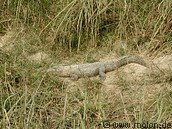About Pokhara - One of the wonderful place Of World
About Pokhara: Pokhara valley occupies the central location in Nepal and is dominated by the peaks of Annapurna range. Its unique setting may be judged from the fact that the town of Pokhara (91 3 metres), is only fifty kilometres from Annapurna 1 (8,091 metres), clearly seen from the valley. There is a decline of six thousand metres in altitude within a short distance of only twenty-nine kilometres; thus the region provides a dramatic contrast in landscape. The northern horizon is defined by a seventy kilometres long wall of snow and ice with numerous peaks. The prominent peaks from east to west are Annapurna South (7,21 9 metres), Fang (7,647 metres), Annapurna 1 (8,091 metres), Rock Noir (7,454 metres), Glacier Dome (7,193 metres), Gangapurna (7,455 metres), Annapurna Ill (7,555 metres), Machhapuchhre (6,997 metres), Annapurna IV (7,525 metres), Annapurna 11 (7,937 metres) and Lamjung Himal (6,983 metres). In addition to these, Dhaulagiri 1 to the north-west and Manaslu-Himalchuli peaks to the north-east are also visible.
Lakes: Pokhara valley abounds in lakes. Phewa, Rupa and Begnas are the most famous ones while Khaste, Dipang and Mardi are some other smaller lakes situated further away. Sporting activities like canoeing and swimming are conducted on Phewa Lake, together with angling of carp fish. On a small island is a temple dedicated to Varahi, and in contrast to the gaiety of holiday makers, devotees go about their worship undisturbed by the goings-on in the water as well as occasional barbeques on the banks of the lake. Apart from the lakes, the floor of the valley is made up of a layer of gravel, cut into intricate terraces and deep canyons by various tributaries of the Seti river.
People:Similar to the contrast between the level plain and the rugged hills, there are sizeable variations in the cultural pattern of the area. The tropical plain and low hills are the home of mainly Newars, Brahmans, Chhetris and other Hindu castes, while the temperate highlands are mainly inhabited by tribal Gurungs and Magars. Above the highest villages at 1,900 metres, there are extensive temperate forests with alpine pastures further beyond.
There are also two Tibetan settlements near Pokhara where one can see women weaving exquisite carpets using traditional designs and methods handed down to them for generations. Both these settlements are famous for traditional Tibetan handicrafts and souvenirs.
Places to see: Pokhara is full of interesting places to visit such as the Seti River Gorge which flows some ninety-one metres below ground level, Davis's Fall called Flatie Chhango in Nepaii where the cascading water vanishes underground, and Mahendra Cave where one can see stalactite and stalagmite formations.
Mini Treks: Although a base for all treks to the Annapurna region, several mini treks can also be organised from Pokhara, notably to Sarangkot. The four-hour trek to the top of this hill offers a spectacular birds-eye-view of Phewa Lake, the entire Annapurna range, the river Seti and the village of Hyangza. A one night trek to Naudanda and Ghachowk can also be made. On the way to Naudanda, one passes the village of Hyangza while from Naudanda, the twin peaks of Machhapuchhre, the Fish Tail Mountain can be seen.
Climate: The prevailing climate of Pokhara valley is humid sub- tropical with heavy rains during the summer. Spring, autumn and winter are ideal seasons for visiting and trekking around Pokhara valley.
Pokhara is connected by daily flights with Kathmandu and also by highway from Kathrnandu and Siddharthanagar (Bhairawa). The town has good hotel facilities, and for trekkers, provisions and porters can be easily arranged.































0 comments:
Post a Comment